Wilt L. Idema and Xiaofei Tian introduce the Fairbank Center’s latest exhibition of eclectic treasures from Chinese history.
This exhibition features a selection of treasured items from the collection of the Za Library (Zashuguan 雜書館) and from the Harvard-Yenching Library. The Za Library is the biggest privately-owned library in mainland China that is open to the public. The Harvard librarians have also made available a small selection from the vast collection of the Harvard-Yenching Library as an accompaniment and complement of the Za Library materials on display. There are Tang manuscript copies, Song printed editions, Liao and Xixia printed sutras (in Chinese and Tangut), Ming and Qing clan lineages and local gazetteers, autographs by prominent late Qing and early Republican personages, and a large trove of popular materials from the late nineteenth through early twentieth century. The joint exhibition is designed to give the audience a taste of these two excellent library collections and to prompt us to reflect on the nature and significance of archival and private collecting in modern China.
The popular materials from the late nineteenth through early twentieth century, which have not been traditionally widely sought by private collectors or public libraries, are a major highlight of the Za Library. These materials, such as the Cantonese “wooden-fish books,” were often intensely local, as indicated by “Southern Sound” (nanyin) in some of the titles and the use of Cantonese tongue. Their contents include transformations of literary classics such as the Golden Lotus or the Dream of the Red Chamber as well as sensational local, national, and even international events, ranging from serious to frivolous, from war, politics, and patriotism to fantasy and erotic love. Juxtaposed with the writings of the highest political and cultural elite of the day, these materials from the lower strata of the literate society give us a good sense of the multifariousness, za 雜, of social life in China during a period of turmoil and change.
Along with a choice selection of the other materials, the collection of the popular materials is featured most prominently in this exhibition. The Harvard librarians have also made available a small selection from the vast collection of the Harvard-Yenching Library as an accompaniment and complement of the Za Library materials on display. The joint exhibition is designed to give the audience a taste of these two excellent library collections, to offer a glimpse into the diverse social reality in Chinese history, and to prompt us to reflect on the nature and significance of archival and private collecting in modern China.
Early Manuscripts, Rare Books, and Fine Editions
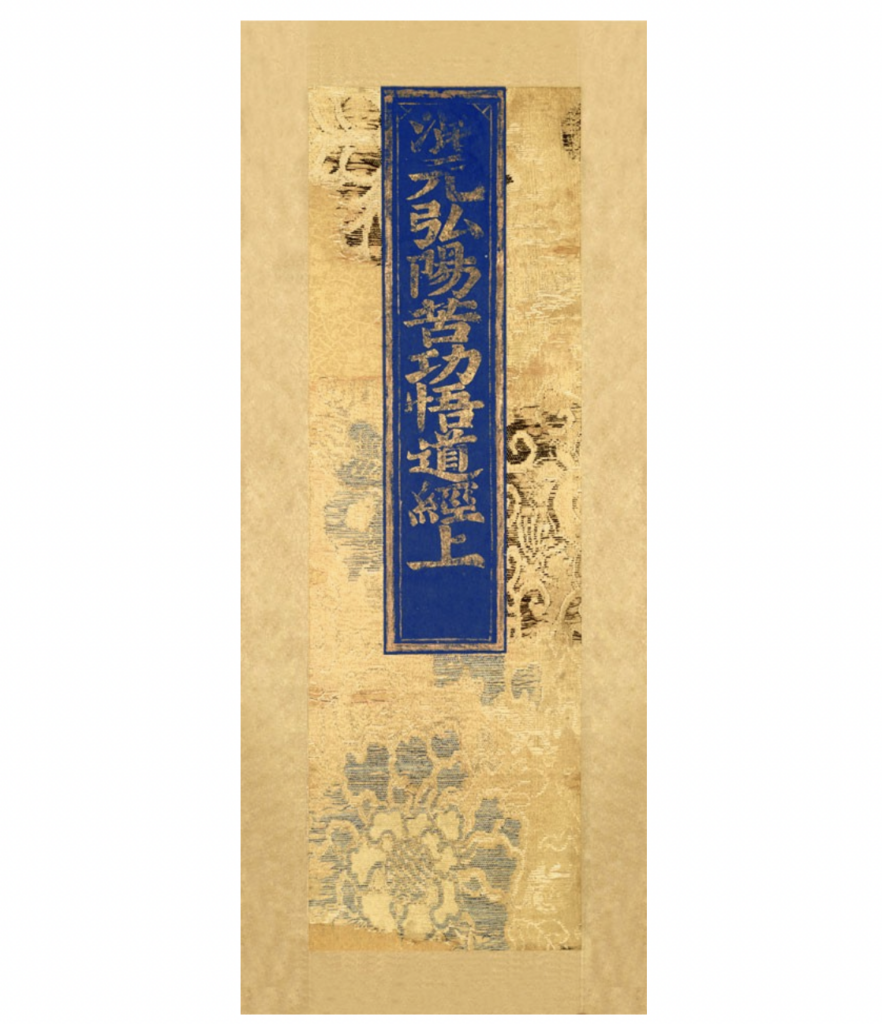
The pride of any Chinese library is its early manuscripts, rare books, and fine editions. The Harvard-Yenching Library is well known for its rare books collection, which includes an important number of Song and Yuan editions. Despite its short history the Za Library too has already been able to build up a remarkable collection of such materials.
The oldest manuscript in the Za Library collection is a Buddhist sutra commentary copied during the Tang dynasty. The collection also includes Buddhist sutras printed during the Liao dynasty and in the Xixia kingdom (in Chinese and Tangut). The Song and Yuan dynasties are represented by a number of fine editions, enough to be the envy of many famous libraries.
Publications of the Ming and Qing dynasties are represented by some fine woodblock prints.

Autographs
The Za Library houses a fascinating collection of autographs of famous personalities of the Qing and the Republican Period. Such autographs are not only treasured for their value as historical documents, but also as examples of individual calligraphy (often seen to reflect the writer’s character). The Harvard-Yenching Library houses for instance a draft of a memorial by Yang Jisheng (1516–1555) accusing the all-powerful prime minister Yan Song (1480–1567) of corruption — this accusation resulted in Yang Jisheng’s imprisonment and execution.
The Za Library collection of autographs includes among many other materials for instance hand-written letters and drafts from late-Qing/early-Republican intellectuals and politicians such as Kang Youwei (1858–1927), Liang Qichao (1873–1929), and Yuan Shikai (1859–1916).
May Fourth intellectuals are represented in the Za Library collection by Hu Shi (1891–1962) and Zhou Zuoren (1885–1967). The famous philosopher Feng Youlan (1895–1990) wrote collation notes on a copy of the Qiludeng (The lamp at the crossroads), an eighteenth century vernacular novel that had continued to circulate in manuscript in his home province Henan to appear in print in the twentieth century. The manuscript copy was to be used as the base text printed by Pushe 樸社, a publishing house founded and managed by a group of famous scholars and writers, but was interrupted by the breakout of the Sino-Japanese War.
The Harvard-Yenching Library shows a specimen of the handwriting of Lu Xun (Zhou Shuren, 1881–1936). It also houses a large selection of private items of the Guomindang stalwart Hu Hanmin (1879–1936).
Precious Scrolls
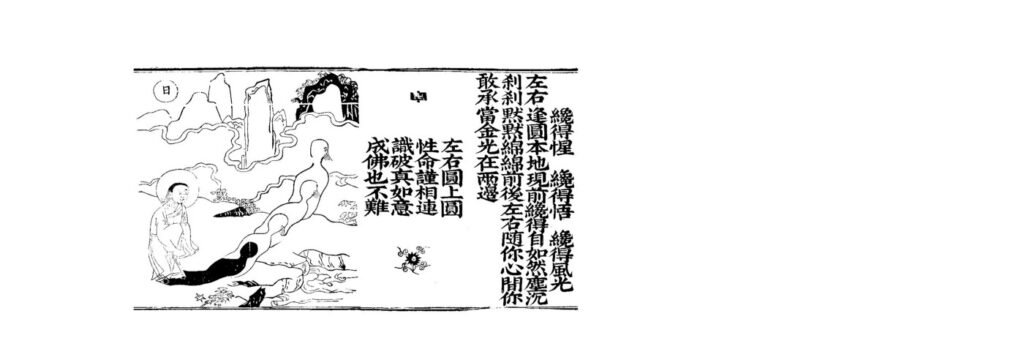
At least since as early as the eighth century Buddhist monks in China had used a variety of prosimetric genres to preach to the lay audiences, as we know from the “transformation texts” (bianwen 變文) discovered at Dunhuang. By the fourteenth century this resulted in the highly formalized format of “precious scrolls” (baojuan 寶卷), which told pious legends such as Mulian saving his mother from hell.
In the sixteenth century many teachers of new religions (“sects”) also used the format of precious scrolls to formulate and spread their teachings. The first to do so was Luo Qing 羅清, the founder of the Wuweijiao 無為教, who in the earliest years of that century wrote no less than five precious scrolls that became known as the “five books in six volumes” (wubu liuce 五部六冊). These were repeatedly reprinted during the Ming, on occasion with financial support of imperial consorts, eunuchs, and officials. The Harvard-Yenching Library holds a set of these materials.
Luo Qing’s work served as a major inspiration for other patriarchs of new religions, who composed their own sets of “five books in six volumes.” Especially the illustrated precious scrolls of the Hongyangjiao 弘陽教 stand out for the high quality of their execution — later legend had it that these works had been printed with imperial support. The Za Library holds complete sets of both the Wuweijiao and the Hongyangjiao precious scrolls.
Many of the new religions of the Ming venerated the Unborn Old Mother (Wusheng laomu 無生老母). Over the course of the Qing dynasty these “sects” were increasingly persecuted by the government, especially from the second half of the eighteenth century.

Song Books

One of the most evanescent forms of traditional print culture is the song book. Often crudely printed as slim pamphlets, their popularity was great, but their chance of survival was very slim as they were passed from hand to hand. This makes the surviving examples in the collection of the Za Library especially valuable.
As in popular song all over the world, in China too the most common topic was love. This of course upset moralists, and in many culture these moralists would try to counteract the baleful impact of such “lascivious songs” by writing and publishing moralizing songs to the same tunes. Again, China was no exception.
Classical history in popular formats
The Ming and Qing dynasties as well as the Republican periods have left us an amazingly rich literature of narrative ballads and prosimetric literature in manuscript and print. Long ignored by scholars and libraries, new discoveries of primary materials are still frequently reported. Some of the earliest works that remained in circulation are summaries of Chinese history. Whereas the Nianyishi tanci 廿一史彈詞 (Plucking rhymes on the Twenty-One Histories) was often ascribed to Yang Shen 楊慎 (1488–1559), the Mupi sanren guci 木皮散人鼓詞 (Drum-ballad by the Tree-Bark Hermit), was written by Jia Fuxi 賈鳧西 (1590–1674), an eccentric literatus from Shandong. This latter work stands out for its cynical take on Chinese history.
Drum Ballads (guci 鼓詞)
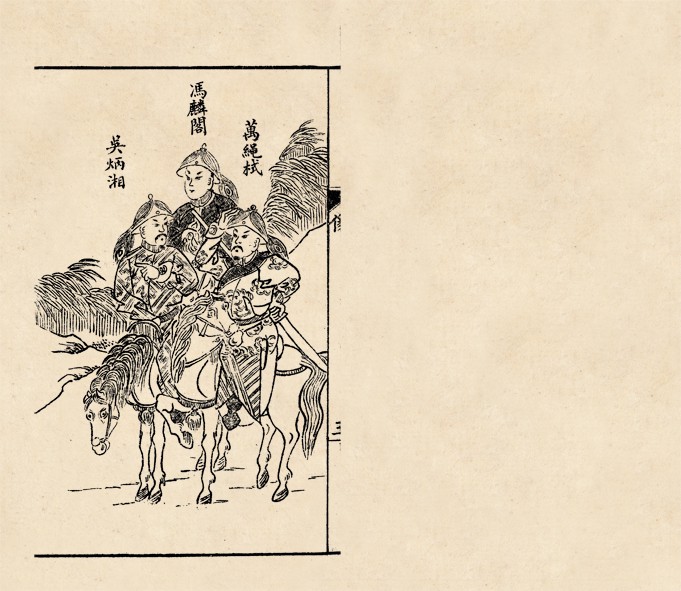
In northern China of the Qing dynasty the common name for long prosimetric narratives was drum ballads. These ballads, composed in an alternation of prose and verse, increasingly came to rely on the ten-syllable line for their verse sections. These texts not only dealt with ancient and recent history, but also with the famous cases of fair and intrepid judges of earlier dynasties as well as the Qing. Once the Dream of the Red Chamber had been published, many of its episodes were adapted for the genre, but urban scandals, such as the Ha’erbin nilun an (The Harbin depravity case) were equally popular.
Initially, the written texts circulated in manuscript, but by the nineteenth century they also were printed by woodblock. By the end of the Qing the lithographic publishers of Shanghai discovered the genre. Their neat and cheap editions quickly became extremely popular. In order to meet the demands of their national audience, these publishers not only published existing texts, but also commissioned new works. For many titles it is now impossible to determine whether the contents were traditional or newly composed — unless, of course, the text deals with contemporary subjects. The collection of the Za Library includes for instance several drum ballads on the political history of the early Republic. Zhang Xun’s failed restoration of the Qing dynasty of 1917 was for instance treated in two separate texts (Xuantong erci dengji [The second enthronement of the Xuantong emperor] and Zhang Xun huoguo ji [How Zhang Xun brought disaster to the country]) both published in 1917). The growing power of the warlords was chronicled in the Cao Kun guci, the Zhang Zuolin guci, and the Wu Peifu guci, all of 1922.
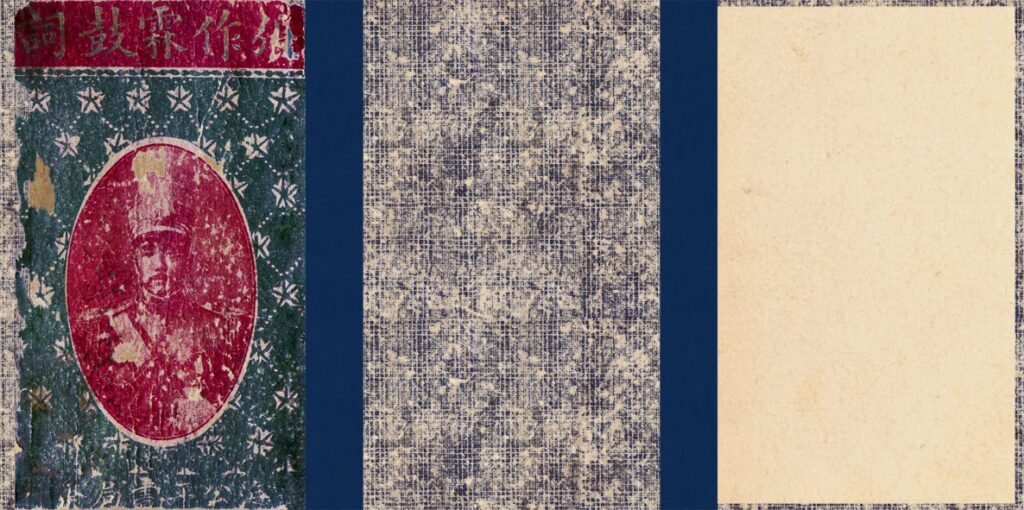
Plucking Rhymes (tanci 彈詞)
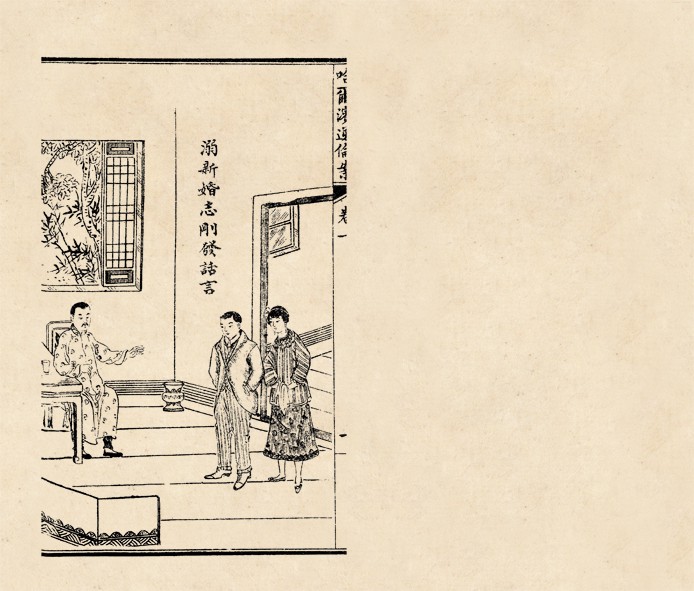
Drum ballads were not the only genre of prosimetric narrative published by the Shanghai lithographic publishers. Apart from a great number of precious scrolls, they also published tanci, the collective designation of the number of local traditions in the Jiangnan region. The printed texts in this genre of the nineteenth century consisted of both of performance-related texts (often with a heavy dose of the Wu dialect) and texts authored by women that stuck closer to the register of guanhua and were primarily destined for reading (even though some texts eventually also were adapted for performance). That the new tanci published by the Shanghai lithographic publishers were also intended for reading is indicated by the element xiaoshuo (novel) in the titles of two examples from the Za Library shown here. The Zuixin jingshi xiaoshuo Ouzhan tanci (An up-to-date cautionary novel: plucking rhymes on the European war) of 1915 informed its Chinese readers of the origin of the Great War. The Huitu xingshi xiaoshuo Guoshibei, Yingxiong lei heke (An illustrated admonitory ovel: a combined edition of A Nation’s Tragedy and A Hero’s Tears) presents in prosimetric format the adaptation of a foreign novel on the eighteenth-century division of Poland — a dire warning for a China that is about to be carved up like a melon!
Wooden-Fish Books (muyushu 木魚書)
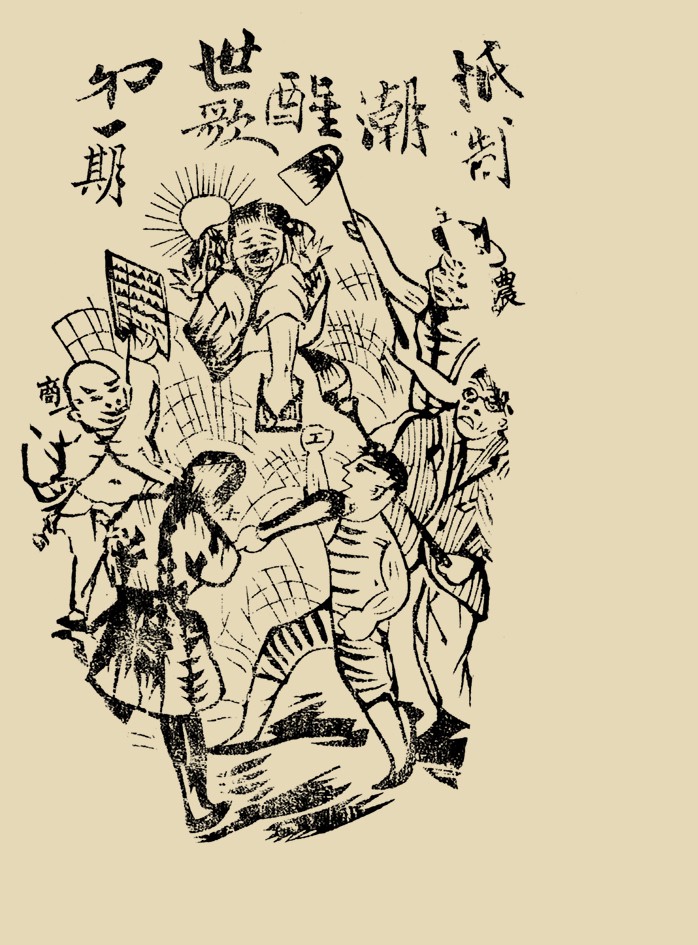
The Za Library holds a very large collection of wooden-fish books. In its broadest sense this term covers all kinds of traditional Cantonese songs, but in its narrower meaning the term refers to long narrative ballads, divided into chapters. Shorter, lyrical pieces may be designated as dragon-boat songs (longzhouge 龍舟歌) or southern sounds (nanyin 南音). While the name of the genre might suggest otherwise, wooden-fish books are not accompanied in performance by the “wooden fish” (a wooden percussion instrument); the term muyu most likely is a transcription of a Cantonese term of unknown meaning.
The history of wooden-fish books can be traced back to the seventeenth century when the most famous work in the genre, The Flowery Note Paper (Huajian ji 花箋記) was printed with a detailed interlinear commentary. In the nineteenth century this text was translated into English, German, and Dutch. While some stories are unique to the genre, the majority of the texts are, as in other genres of narrative ballads, adaptations of popular novels and plays. So when the Dream of the Red Chamber had been published, scenes from the novel also were eagerly adapted as wooden-fish books.
As in the case of the Shanghai lithographic publishers of drum ballads, the publishers of wooden-fish books too produced many titles devoted to political events of the outgoing Qing and early Republic. But whereas drum ballads focused on northern warlords, the Cantonese ballads dealt with the adventures of early Guomindang heroes such as Sun Yatsen (1866–1925) and Huang Xing (1874–1916), or celebrated the victims of failed attempts to overthrow the Qing. We also find songs in praise of the establishment of the Republic in 1912.
Three-Character Classics (Sanzijing 三字經)

The original Three-Character Classic probably dates from the thirteenth century. In short phrases of three characters each, it provides a simple summary of traditional Chinese morality and of Chinese history; rhyme of the even lines made it even more easy to memorize. In late-imperial times it was one of the most popular text books in primary schools.
Because of the proven effectiveness of the format of the Three-Character Classic, it was often used to provide readers with a limited literacy with a summation of essential knowledge. The collection of the Za Library includes for instance three-characters classics that provide a summary of traditional external medicine and a somewhat more detailed summary of Chinese history. The format was not only used for the propagation of traditional Chinese values. In the collection of the Za Library one also finds a Muslim three-character classic (Baigong yize) and a Protestant three-character classic (Zhenli sanzijing), as well as a Three-Character Classic on Western Learning.
The overthrow of the Manchu Qing dynasty is reflected in A New Three-Character Classic of the Republic. The propaganda activities of the Chinese Communist Party in in the 1940s are reflected in three texts: The Three-Character Classic of Resistance against Japan; The New Three-Character Classic (of the New Democracy Period); and The Three-Character Classic of the People’s Army (of the Civil War Period). The first two of these three titles are preserved in cyclostyled copies, reflecting the difficult circumstances of the time.
Even after 1949 the original Three-Character Classic remained in use in some country schools up to the eve of the Cultural Revolution because of a lack of more suitable teaching materials.
Wilt L. Idema is the former Director of the Fairbank Center for Chinese Studies and Professor of Chinese Literature, Emeritus at Harvard University.
Xiaofei Tian is Professor of Chinese Literature at Harvard University.

